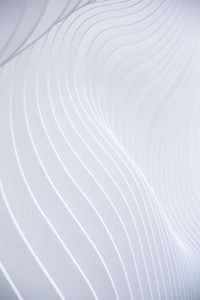I am a crafter. I have been for about 15 years now. I love to stamp on things, but always hated the background work in getting my images cut out.
This is how I remove the background from a coloring page when stamping: First, print out the image you want to use. I like to use card stock paper and set my printer settings to “best” quality when printing coloring pages. You can use plain white paper if you want, no problem there. Then take your image and lay it over another piece of cardstock or photo paper and trace around it with a pencil.
I like to use the pencil for this because you can erase it later if you make a mistake in tracing your image. Using an ink pen will make that part of your cardstock permanently marked up. The reason I use cardstock is because this is what I have on hand, and you may find other types of paper working better for you.
After you have traced your image onto your second piece of paper, cut it out using an X-acto knife or scissors. Now take your image that you just cut out, lay it on top of your colored image (the one with the background still on it) and carefully trace around the edge of the image
Here are some tips for removing your background from your coloring page, so you can stamped it onto your cards, scrapbook pages and other paper crafts. I use the same method when I am creating my own digital coloring page files.
This is a great technique if you want to make your own greeting cards but don’t have the large format printer needed to print a full size stamping on card stock. (paper)
I also use this method when coloring my digital coloring pages. First I create my pages in Illustrator, and then I run them through Photoshop to both clean up the images and remove the background so I can color them on my computer screen and be able to print them out later.
I hope you find these tips helpful.
If you have any questions or comments please feel free to leave them below or email me at: carolynjamesart@gmail.com
*Use a good high quality paper like Strathmore 400 series or any other fine art watercolor paper that is smooth and does not contain sizing agents.
*If you are using ink pads for stamping directly onto your paper, then use a good quality stamp pad like Tim Holtz Distress Ink Pad . They work great for tinting the edges of your image especially if
The first thing you need to know is that your coloring page is printed on a thicker paper. You can tell by feeling the back of the image by placing it face down on a table. If you feel a slight resistance when rubbing your finger across the back then the image is printed on this thicker paper.
Tearing:
If you tear the page out, you will notice two layers of paper. The top layer will be torn and ragged around the edges. The second layer will be smooth and clean. It will have a slightly different texture than ordinary paper as well.
Tearing off the top layer as opposed to cutting it off with scissors leaves behind a clean edge because the top layer of paper is actually stuck to the bottom layer. This means that if you tear off the top layer, you still have to use scissors or an Exacto knife to cut off the second layer of paper after it has been separated from the first with your tearing motion. Cutting carefully around each individual color block while leaving behind a clean edge can be tricky, but there are ways of doing it.
The easiest way to remove just the background and leave behind a clean edge is simply to place your cut-out image face down onto an Exacto knife blade, hold it firmly
The first step is to choose your image. Some images are larger than others. If you are using a large image, trace the image on to a piece of card stock and cut it out so that your stamped image will be slightly smaller than the background, or negative space in the picture. You can also use an exacto knife to cut out an image from a magazine or newspaper.
You will need:
A coloring page with a white backgroundA regular ink pad (NOT an archival ink pad)A paper towelA ruler(optional)An exacto knife (optional)
Step 1: Place your coloring page on top of your paper towel. Make sure that you have enough room around all sides of the coloring page so that you will be able to get a clean stamp off of the page easily.
Step 2: Squeeze your ink onto the towel making sure not to get any on your actual work area, only on the paper towel.
Step 3: Gently rub the tip of your stamp over the entire face of the stamp pad until it is fully covered in ink. Be careful not to push too hard as this can cause your stamp to leave residue behind on your project.
Step 4: Very gently press the tip of your stamper
I know you have all heard this before but it is something I can’t stress enough. You need to make your image on your computer, that you are going to color and use as a stamp, large enough to allow for shrinkage when you print it out.
I usually make my images at least 2 inches larger than the actual stamp size. If you only make them 1 inch larger than the finished stamp size then your image will not be clear and crisp when stamped out. One inch is not nearly enough if you want to get a good crisp image.
The other thing that is important when making an image for a stamp is to make sure that there is no background to the image. If there is a background to the image like in this one below do not use this picture because it will print out with a white background around the edges of the stamped image. The white is actually paper from your printer and you don’t want that around the edges of your final image for a stamp, so delete it! You can either crop it or delete it….but delete it!
So as you can see here on this picture I had cropped out the background when I made this picture into an actual stamp so there wouldn’t be any white paper around the edges of my final stamped
Cutting out the background of your stamped images is a very important skill for crafters. It’s also one of the most difficult skills to master so today I’d like to share with you my own foolproof method for cutting out stamped images.
This method is similar to using a crop-a-dile, however it is much easier and more precise. You can use this method on any image whether it’s been colored in or not.
For this tutorial you will need:
A photocopier
A cutting mat (recommended)
Xacto blade or other sharp blade
Paper scissors
Some sort of straight edge ruler (I used a paper cutter for this tutorial but you could just as easily use a piece of cardboard)
Let’s get started!
It is not possible to make a black line on the computer that is exactly the same width as the ink marks on your stamp. The reason for this is the difference between something that is pixel-based and something that is vector-based.
Light travels in waves. An image on a computer screen is made up of tiny dots called pixels. Each pixel can display one color at one intensity (or value).
The color and intensity of each pixel depends on how much red, green, and blue light it receives. When you look at a computer screen you are really just looking at lots of colored dots–what appears to be a smooth flow of colors and values is really just a bunch of colored dots changing from moment to moment.
If you were to stretch out the points on your picture across time, it would look like a graph made of lines or curves, depending on whether your original picture was an illustration or a photograph. On a monitor these lines are made up of pixels rather than ink marks, but otherwise they look very similar.
If you have ever used Microsoft Word’s picture editing capabilities–cropping, resizing, rotating, or otherwise modifying an image–you know that when you do so it sometimes “breaks” the image: removing part of it creates


